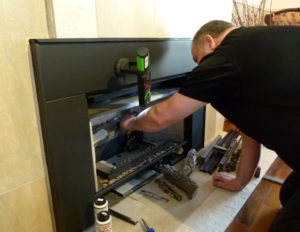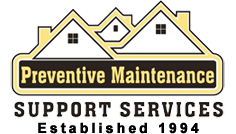 The fireplace is one of central place in the family gathering and any important events. As consequences, the chimney is an integral part of the fireplace and consequently our house as well. Fire burning, apart from the warm atmosphere it also produces creosote. Accumulation of creosote, a combustible by-product of charred wood, along with their walls, in combination with high internal flue temperature, this lead to a potentially dangerous chimney fire in the house. Below are tips for chimney safety.
The fireplace is one of central place in the family gathering and any important events. As consequences, the chimney is an integral part of the fireplace and consequently our house as well. Fire burning, apart from the warm atmosphere it also produces creosote. Accumulation of creosote, a combustible by-product of charred wood, along with their walls, in combination with high internal flue temperature, this lead to a potentially dangerous chimney fire in the house. Below are tips for chimney safety.
1. Organizing an annual chimney inspection
The chimneys need to be inspected and swept annually. If the chimney (fireplace / furnace/ water heater/flue) is clean and free of obstructions, there is less danger of a chimney fire or carbon monoxide poisoning. In addition to the routine, pick the right company to do to inspect and sweep the fireplace/ furnace flues. The best way to avoid a house fire caused by
the fireplace or chimney is to hire a professional chimney sweep to inspect for cracks and loose bricks, plus also clean the chimney.
::Do you need help with fixing leaking roof? You can contact us as well for that
2. Assuring chimney is free and clear of obstruction
It is vital to make sure that the top of the chimney is free and clear of tree branches, ivy, or overhanging branches.
3. Putting a cap on chimney
It is highly recommended having a chimney cap installed on all of the flues. Cap or a top that has wire mesh along the sides will keep out rain and snow, birds, and other critters that might be running around on the roof. New chimney caps are usually constructed of stainless steel and do not rust. These caps keep out rain, birds, raccoons, squirrels, leaves and other debris that could obstruct the flow of flue gasses in the chimney.
4. Choosing the right fuel
Well-seasoned hardwood yields the most Btu’s (heat) for fireplace or wood stove. Wood that has been split and stacked for 6 months out of the rain will be dry enough. “Green” wood creates more creosote. It is not advised to burn Christmas trees, pressure treated or painted scrap lumber into the fireplace or wood stove. In addition to that avoid throw wrapping paper, boxes, or trash into the fireplace. Also be cautious, if you try to burn too much wood, the chimney can crack and you run the risk of creosote build-up. Burn wood on a grate placed near the back of the fireplace.
5. Avoiding liquid free light
It is highly dangerous to use any type of liquid fire starters (lighter fluid, charcoal grill lighter, gasoline, etc.) to start the fire. Instead, only use fire starters specifically designed for fireplaces and wood stoves. Besides the inherent danger of out of control flames inside the home, some of these accelerants can leave residues that may ignite inside the flue (chimney fire).
6. Keeping it clear
Keep the area near the chimney clear. Keep all furniture and combustible furnishings at least 36 inches away from the fireplace or wood stove. If you have trees that hang over the house near the chimney, make sure branches and leaves are at least 15 feet away.
Exposure to heat can lower the ignition temperature of combustible items over time, and they can catch fire. Keep the area in front of the fireplace clear of paper and debris. It can be tempting during the holidays to place decorations close to the fireplace, but keep them at a safe distance.
7. Putting screens or doors in the front of fireplace
Have a fireplace screen or set of glass doors with a screen in front of your fireplace during operation. Flying sparks from sappy wood can burn holes in the carpet or furniture. Remember, if you have glass doors, they must be open during the operation of your fireplace, do not close them if a fire is burning. The glass is not rated for those temperatures and the fire will be starved of oxygen and may smoke up the home. If the fireplace doesn’t have a glass door, use a wire mesh screen.
8. Putting smoke detectors and carbon monoxide detectors
Like fire, carbon monoxide can be a deadly threat. Carbon monoxide is an odorless, invisible toxic gas that kills about 400 people per year and sickens many more. While carbon monoxide poisoning can result from poorly functioning home appliances and heating systems, it can also come from poorly maintained chimneys. The chimney and chimney connector serve as a furnace’s exhaust system. If debris is blocking the chimney, carbon monoxide can accumulate inside the house. It is advisable to install and maintain smoke and carbon monoxide detectors inside and outside of bedrooms. Replace the batteries each season and test the detectors regularly. If the detector is more than 10 years old, replace it.
9. Always watch the fire burning
Tumbling logs off the grate can knock over a fireplace screen and start a house fire. Do not leave them unattended.



